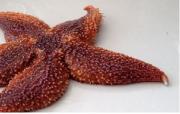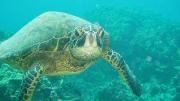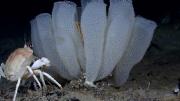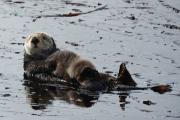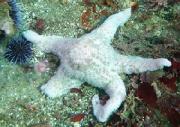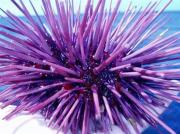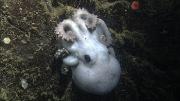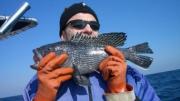Imagine that every time a veterinarian microchipped a dog or cat, the animal found a way to expel the microchip from its body. It turns out that is exactly what a sea star (aka starfish) does with a foreign object in its body. It pushes the object to the tip of an arm and then ejects it from its body.
Articles
The Marine Science Institute's monthly column, Science and the SeaTM, is an informative and entertaining article that explains many interesting features of the marine environment and the creatures that live there. Science and the SeaTM articles appear monthly in one of Texas' most widely read fishing magazines, Texas Saltwater Fishing, the Port Aransas South Jetty newspaper, the Flour Bluff News, and the Island Moon newspaper. Our article archive is available also on our website.
Shortly after sea turtles hatch and enter the waves, they vanish from sight for the next two to ten years. Scientists often call these the “lost years” because no one is sure where the turtle toddlers go during this time. Until recently, many marine scientists believed the young turtles ride the waves until they gain the strength or navigation skills to actively swim. But scientists wanted to find out for sure, especially since sea turtles are endangered. Knowing where they are going and how they are getting there might make it easier to protect them.
The white vase-like sea sponge known as the Venus flower basket would seem incredibly fragile since it’s made of silica, the main ingredient of glass. Further, the only thing keeping this glass sponge anchored to the sea floor is a tuft of tiny glass structures called spicules, each about the thickness of a human hair.
As utterly exhausting as it is to care for a newborn, most moms would never dream of abandoning their child. But what if it were a question of life and death…for the baby or the mom? That’s the dilemma that sea otter moms sometimes face when they can’t provide enough calories to meet their pups’ incredibly high energy demands. Researchers at a sea otter pup rehabilitation program measured the metabolic rates and daily caloric needs of sea otter pups and found the mothers need to provide more than 222,000 Calories to raise pups from birth to independence.
Just under a million years ago, a major pattern in Earth’s climate suddenly changed. Instead of having an ice age about every 41,000 years, the cycle switched to about every 100,000 years – and the cold periods had even lower average temperatures than the previous ones. What caused the interval between ice ages to double?
When a sea star (a.k.a. starfish) develops wasting syndrome, the disease hits hard and fast. Lesions appear on the star’s tough outer skin. Then the tissue around those white sores begins to decay. The sea stars “deflate” and lose control of their five limbs, which curl and twist and eventually begin disintegrating. The starfish gradually “melts” into nothing.
When the going gets tough, purple sea urchins appear to get tougher, or at least tough enough to possibly cope with climate change. Purple sea urchins are referred to as a “keystone” species because the ecosystem needs enough of them to feed marine mammals, fish, seabirds and other predators, but not so many that they overrun the place. Increasing carbon dioxide levels in the atmosphere may threaten that balance. As oceans absorb more carbon dioxide, the water becomes more acidic, which decreases calcium carbonate levels.
At 21 months, elephant pregnancies last more than twice as long as human pregnancies, and frilled sharks carry their embryos for 42 months – twice as long as elephants. But the deep-sea octopus has every animal on the planet beat when it comes to her unborn young. Researchers recently observed a deep-sea octopus mother brooding her eggs for 53 months – a whopping four and a half years.
A rapid ascent from deep water to the surface means a rapid drop in pressure. That can expand a fish’s swim bladder – the organ that helps a fish control its buoyancy – so much that it pushes other organs aside or even out a fish’s mouth. Scientists have worried that this “barotrauma” might permanently harm a fish, making it harder for deep water fish to survive if they are released. Fortunately, at least one popular sport fish can overcome this trauma.

